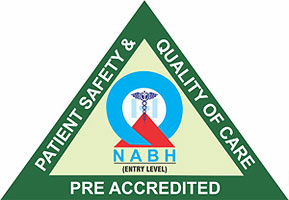+91-7291089674 (Bandra)
+91-7291092120 (Kandivali)




April 5, 2023 | Author: Admin
People frequently work on their laptops, use their cell phones, or even watch TV while it is dark. They do this for a variety of reasons, one of which is to enhance their experience. Yet, as some individuals tend to think that doing so could hurt one’s eyes, it is common to be scolded for doing so. But going to the movies and staying in the dark to enjoy a movie is perfectly acceptable. So what is the proper course of action? Should we restrict the use of screens in the dark in all circumstances, or should we continue as is?
It’s common knowledge that using a screen in the dark might strain one’s eyes. This has been proven scientifically to be true for a large number of individuals.
Most of us have surely heard that looking at devices while sitting in a dark room is harmful for our eyes. It’s interesting how this differs from going to the movies and spending money to sit in a dark theatre watching the screen for a few hours. What, then, is the reality? The lighting levels frequently flicker and vary when a screen is on and playing something like a movie or TV show.
This implies that throughout the movie or show, your eyes will need to adjust to various lighting levels. Your eyes need to work harder to focus as a result of these changes, which causes eye strain. This applies to both the house and the theatre, although we are more inclined to accept a dark theatre as a necessary component of the immersive movie experience than to associate it with eye strain.
We can rely on something called bias lighting to prevent eye strain caused by watching screens in the dark. This is the time to brighten the space around your TV to reduce the contrast between the light from the screen and the dark environment you’re sitting in. Your brain responds more quickly to visual stimuli as a result of the lighting contrast, which reduces total eye strain and discomfort. You can accomplish this by turning on the lamps close to the TV or, for a subtler effect, by adding bias lighting lamps behind the TV.
If you experience eye strain on a daily basis, there are several signs of eye strain that you might not even be aware of. Consider the following signs:
Compared to when we are not looking at screens, we blink much less while we are looking at screens. Due to a lack of lubrication from the tear film that normally covers the surface of the eye, this might cause our eyes to feel dry. The majority of the symptoms mentioned above have it as their primary cause.
Making sure you blink more is the key to preventing eye strain caused by prolonged exposure to digital screens. One of the easiest methods to achieve this is to just make a conscious effort to blink more frequently while tightly squeezing your eyes each time. Your lacrimal glands are stimulated by the squeezing motion, which promotes more eye hydration. Using hydrated eye drops should relieve any uncomfortable symptoms you have if blinking doesn’t work for you.Another option is the 20/20/20 rule, which urges you to give your eyes a break from screens. You can achieve this by focusing on something for 20 seconds that is 20 feet away from you once every 20 minutes. This method is also advised for use at the workplace, especially if your work necessitates extended screen time.
Enhancing the flexibility of your eye muscles is another way of preventing eye strain. Doing an eye figure-eight, moving your eyes side to side and up and down in an open area, and massaging the muscles around your eyes are some flexibility exercises.
In addition, you can avoid eye strain from excessive screen time by:
Glaucoma and astigmatism have always been linked to chronic eye strain. It is important that you take all reasonable steps to prevent its onset and quick progression, including limiting your screen time.
The recommended course of action in cases of eye injury or severe eye strain is to visit an emergency facility or make an immediate call to a healthcare provider. A doctor can diagnose you by doing an examination and getting information about your symptoms.
At Ojas – Eye Hospital in Mumbai, we provide expert advice and a variety of vision correction procedures. You may rely on our eye specialists to assist you with no worries.